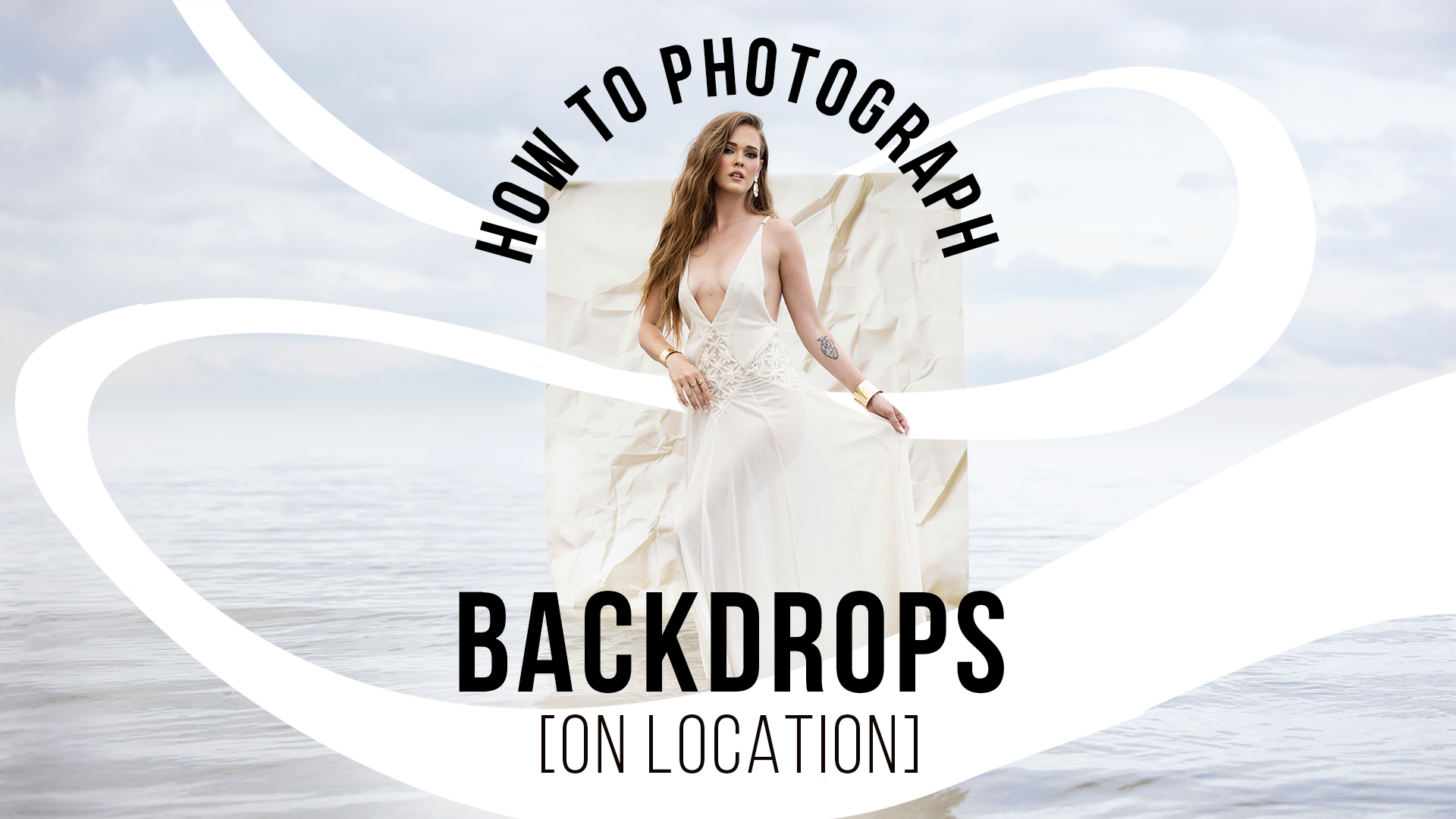From Portraits to Ads: How Portrait Photographers Can Make the Transition to Commercial Photography with Jeff Rojas
Want more information on this article? Get access to video content and additional supporting images. Launch the October 2017 issue of the magazine by logging in or signing up for a free account. Shutter Magazine is the industry’s leading professional photography magazine.
Enter “how to become a commercial photographer” into Google, and most of the results are subpar at best. Most commercial photographers say they just fell into it, while others are much more secretive. As a photographer who’s worked alongside some amazing advertising agencies and brands, I’m going to tell you how to start and why it’s not as glamorous as you might think.
Let’s start with this statistic: The total digital ad spend in the U.S. for 2016, according to eMarketer.com, was $192.02 billion.
Ad spend is what companies allot for their marketing objectives. It includes digital banners, videos, sponsorships, classifieds, Facebook campaigns and commercials. Companies spend billions on marketing. If you’re interested in becoming a commercial photographer, then you probably want a piece of that action.
It’s important to clarify what a commercial photographer does. Most photographers who want to dive into it focus solely on fashion. While fashion photography is a subcategory of commercial photography, it’s not your only option. Commercial photographers produce images used in advertising, product placement or merchandising. If you’re using your images to sell a product or service, you’re a commercial photographer, plain and simple.
Building a Portfolio of Marketable Work
Let’s put that nearly $2 billion ad spend into perspective and break it down by industry. Take a look at the stats below:
21.9% Retail
12.7% Automotive
12.2% Financial Services
11% Telecom
8.7% Consumer Products
8.3% Travel
7.6% Computers and Consumer Electronics
5.9% Media
4.8% Entertainment
2.8% Healthcare & Pharmaceutical
4.3% Other
Every one of those industries needs either still images or video to market themselves. As the consumer market changes, these industries need to create content to adapt to the needs of their audience. Photographers provide that content.
There’s a wide variety of options you have when choosing a niche. You can become a fashion photographer, food photographer or lifestyle photographer, and there are so many industries you can focus on. Separate yourself from the flock. Become a specialist in a unique area. Demonstrate your value by offering something no one else does.
Let’s say you primarily photograph newborns. Think of how many different products are sold on the newborn market: diapers, car seats, baby carriers, teethers, highchairs, bath products. If photographing newborns is your expertise, you can easily create a portfolio of marketable images that sell those products. Your keen eye for detail will separate you from the generalist commercial photographer who has never photographed newborns.
IMPORTANT: Portrait photography is not commercial photography. The standards of award-winning imagery don’t always coincide with those of the commercial portrait realm. When clients look to hire a commercial photographer for an assignment, they’re not looking just at your artistic expertise—they’re even more interested in your ability to get a job done. Your clients’ biggest concern is that your images sell their products and services. Learn the rules so you can break them masterfully.
Standing Out From the Crowd
So how do I separate myself from the masses? I realize the value in separating myself from everyone else while drawing attention to myself. That’s exactly what companies try to do with their marketing dollars: create compelling ads so consumers are focused on them and no one else.
I’m not just a content creator; I’m also a marketing consultant. I consult with marketing agencies to create a content marketing strategy based around a product they want to sell. Then I produce the images. Not only am I paid to create the images, but I’m paid to come up with the ideas and marketing strategies behind them.
In the fast-paced world of digital technology, we are constantly bombarded with ads. Assuming you’re reading this article in its physical format, you’ve skimmed through the magazine and have seen several ads. If any of those images made you stop and look, the photographer did her job. If you passed an ad without giving it a second glance, then a company lost money.
The commercial photographer’s job is to make people want to buy the product you’re marketing. Fashion photography sells clothing. Food photography sells food. A great car ad should make you Google whether or not you can afford that car. That’s what a great commercial photographer does.
When you’re trying to create your first commercial photography portfolio, keep that in mind. Let’s say you wanted to photograph an automotive portfolio. You’d photograph not just a pullback shot of the car, but also key details. You would showcase the gauges, interior and cockpit, or use leading lines to accentuate the car’s shape. You’d shoot any accessories in a complementary way and include all of those images in your portfolio. Always remember that the marketing company is going to use your work to sell the car online. I don’t care if you’re photographing lipstick or a bridal dress for a marketing campaign—focus on the product you’re selling, not just the model in the image.
Find a niche that you’re passionate about. If you’re interested only in photographing fashion because of the pretty models involved, you’re going to miss key details that your client needs to market their products. It’ll be a short-lived career.
Landing Your First Commercial Gig
Landing your first commercial gig isn’t as difficult as it might seem. It’s simple: Shoot good work. Put it in front of the right person who makes hiring decisions. Put in a bid that falls into their budget. Pitch a mood board. Shoot the job. It’s more complicated than that and there’s a ton of emails and phone calls involved, but that’s essentially how it’s done.
When I say good work, I mean great work. Shoot a body of work that shows you’re capable of doing the job. With looming deadlines and tight budgets, art directors don’t want to take a chance on someone who might not get the job done. Again, include detail shots in your portfolio. They demonstrate your attention to detail.
Turning Passive Marketing Into Active Marketing
I’ve found that the easiest passive way to reach brands is by simply shooting work consistently and using social media to post my work. To maximize my effort, I’ve also started to tag their brands in my images, and use their marketing hashtags to join marketing campaigns they’re running. This shows that I’m actively engaged with their brands—but in a way that takes a couple of quick keystrokes and not much real effort.
For the newborn market, tag the car seats, baby strollers or whatever your client’s selling. Brands will want to repost your images, and this is where things can get dicey. You can request payment to license the image, but most brands will tell you they don’t have the money and simply are sharing to give you exposure, even though they’re using your image to market their product. Worse, some brands will repost your images without your permission and without crediting you. That’s copyright infringement, but choose your battles.
Social media marketers work in the marketing department. You know who else works in the marketing department? Marketing directors. Art directors. Photo editors. The list goes on. This is your opportunity to turn a potentially adverse situation into a business opportunity.
Here’s the usual conversation:
Company: We love the photo you tagged us in. May we share it on our account? We’ll obviously provide you with a photo credit.
You: Thanks so much for reaching out and for the kinds words! I usually charge $X for social media usage of my imagery. If you’d like to license them, please PayPal me at __________.
Company: Hi, _____! We don’t pay for Instagram shares as it’s not in our budget, but we do always give proper credit.
And then the conversation is over—unless you start a back-and-forth argument with them, which I never advise doing. Rather than leaving the conversation without a phone number, name or email to pitch your portfolio to, turn it into a marketing opportunity.
Follow up the above conversation with something like:
You: That’s completely understandable. I know that social media marketing budgets are getting smaller and smaller these days. While I can’t afford to give you images for free, I have an amazing gallery of images I can send you if you’d like to license them in bulk.
I think they complement the marketing you guys are doing these days. If you like them, I’d be willing to work something out with you. What email can I send them to, no strings attached?
Do you see what I did there? I turned a polite “no” into a warm business lead. I also took that opportunity to acknowledge their fears and what they were trying to accomplish. There’s no better way to get companies to hire you than to get them on your side.
After social media, you should join sites like FoundArtists.com that allow advertising agencies to connect with photographers. You can set up an online portfolio on the platform, and set up regular mailers the site sends to advertising agencies on your behalf. Your contact information and portfolio will appear among a large group of photographers, but if you’re diversifying your portfolio with solid and sellable work, you shouldn’t have any issue booking assignments. Again, it’s a passive way of earning income, but it allows you to market your business while you’re running day-to-day operations.
Big-Dollar Jobs: Few and Far Between
“Things aren’t what they used to be.” That was what my first photography mentor uttered after I asked about how to become a commercial photographer. “People no longer make $10,000 to $15,000 day rates like the used to.” Those words always echo in my ears when I’m booking an assignment. My mentor was right: There are very few photographers making those day rates today. The top 20 photographers in the world are rumored to make six-figure day rates, but they’re not shooting every single day.
I’ve had a couple of bids in the $30,000 to $50,000 range over the past few years, but those have been few and far between. The highest assignment I’ve bid on was around $150,000. These figures are intended to cover expenses, talent, assistants, etc. That’s not what you’re taking home at the end of the day. Most photographers reading this will likely not reach those heights. Commercial photography is either feast or famine. You might get a really good gig one month and then go without work for three. There will be great years and terrible ones. You’re at the mercy of the economy and ad spend, so don’t expect miracles.
Subsidize your income through portraiture so you can maintain your overhead, lifestyle and the work you choose—until you are booked so solid and consistently that portraiture isn’t even a second thought.
My last advice is to save during times of feast so you can ride out times of famine. I’ve seen too many photographers throw in the towel because they just couldn’t manage the game of commercial photography. With the right effort, anything is possible.




